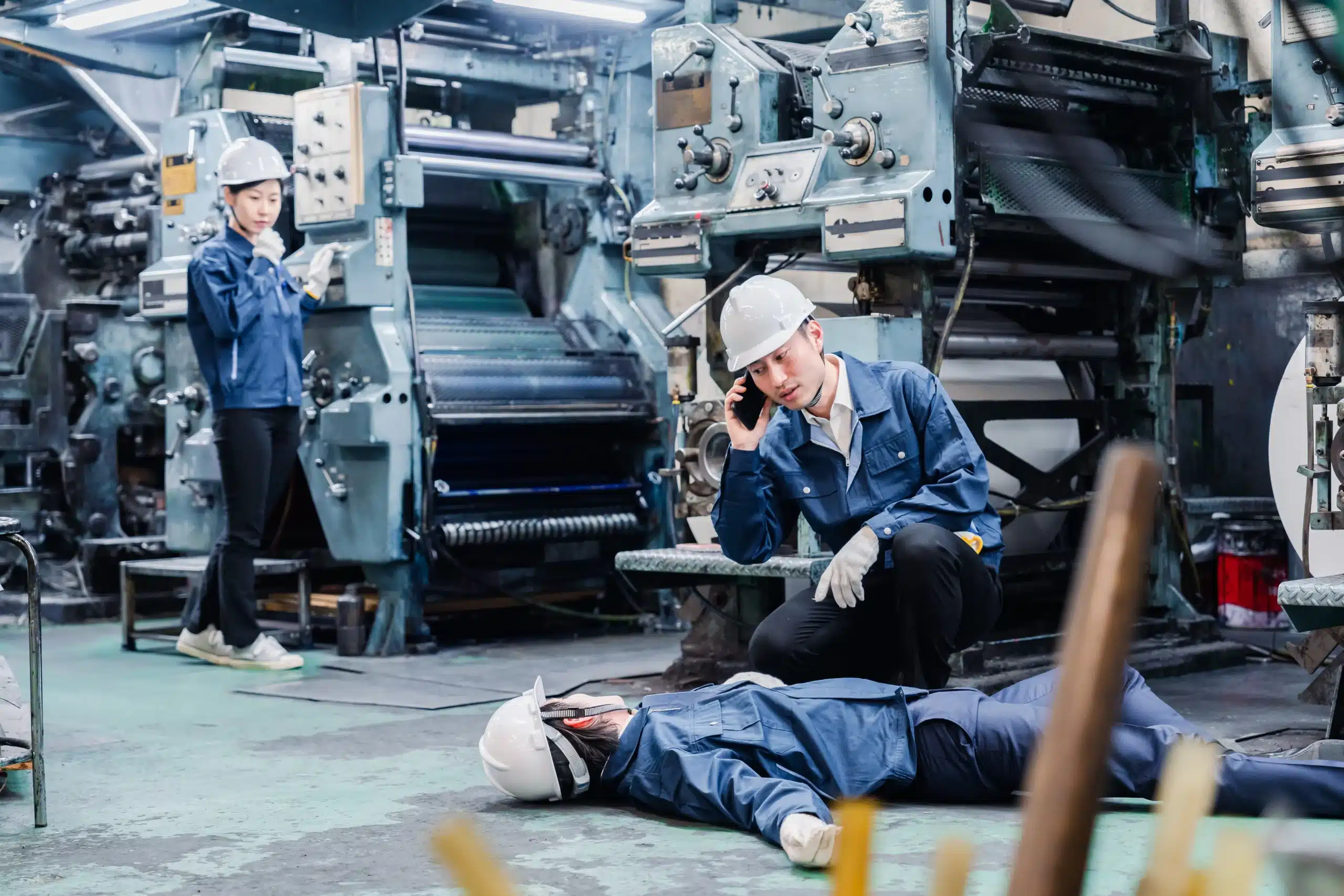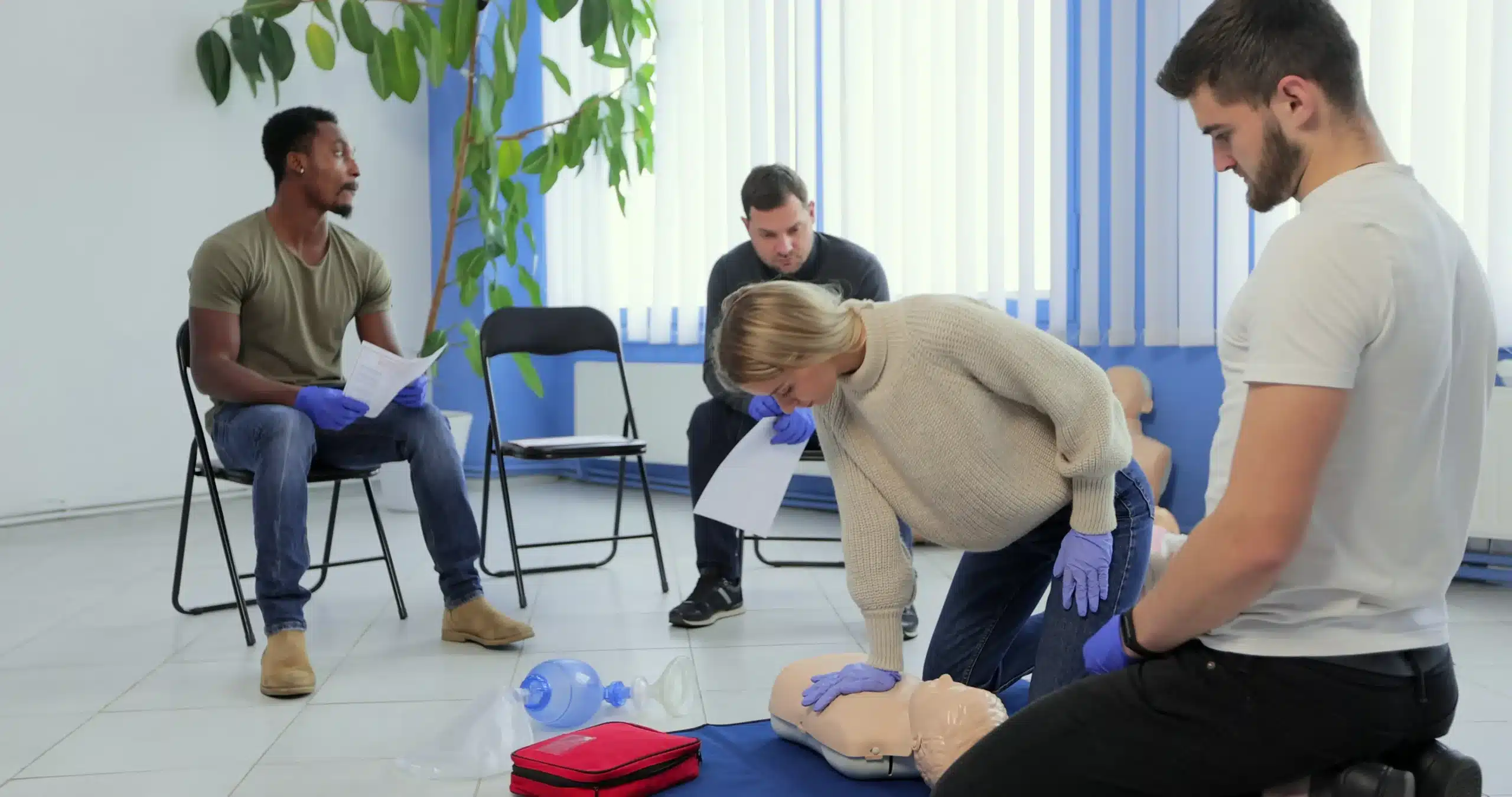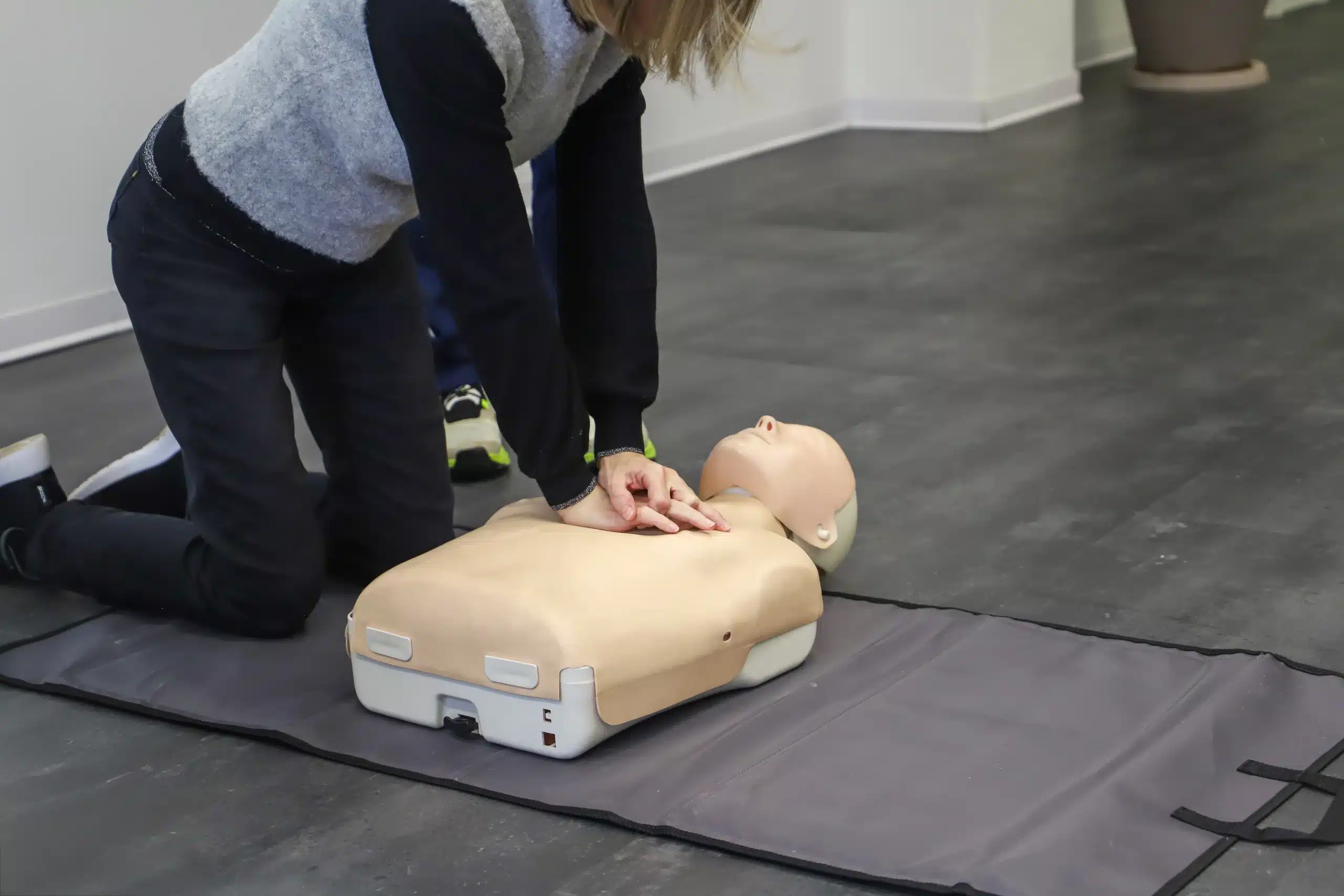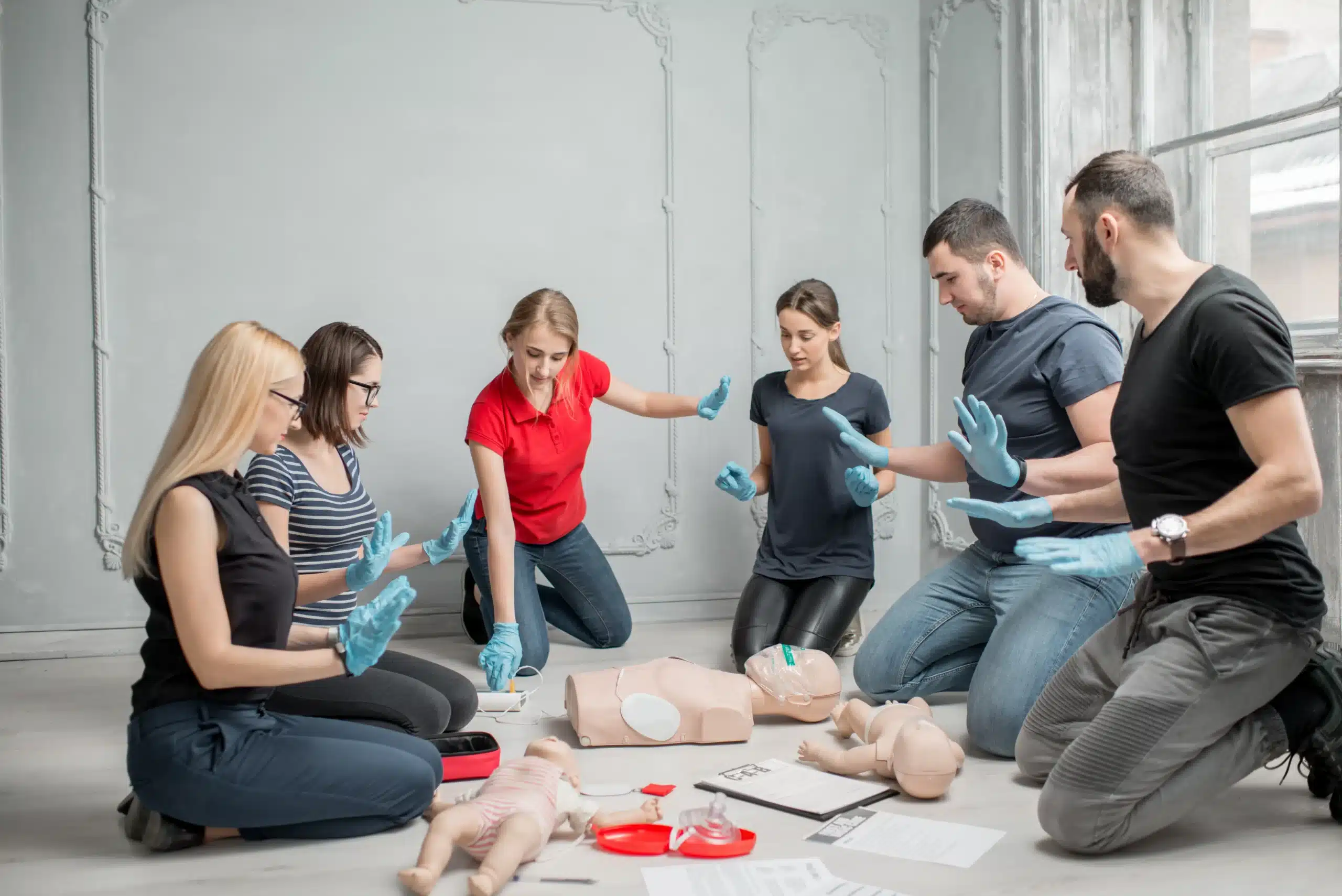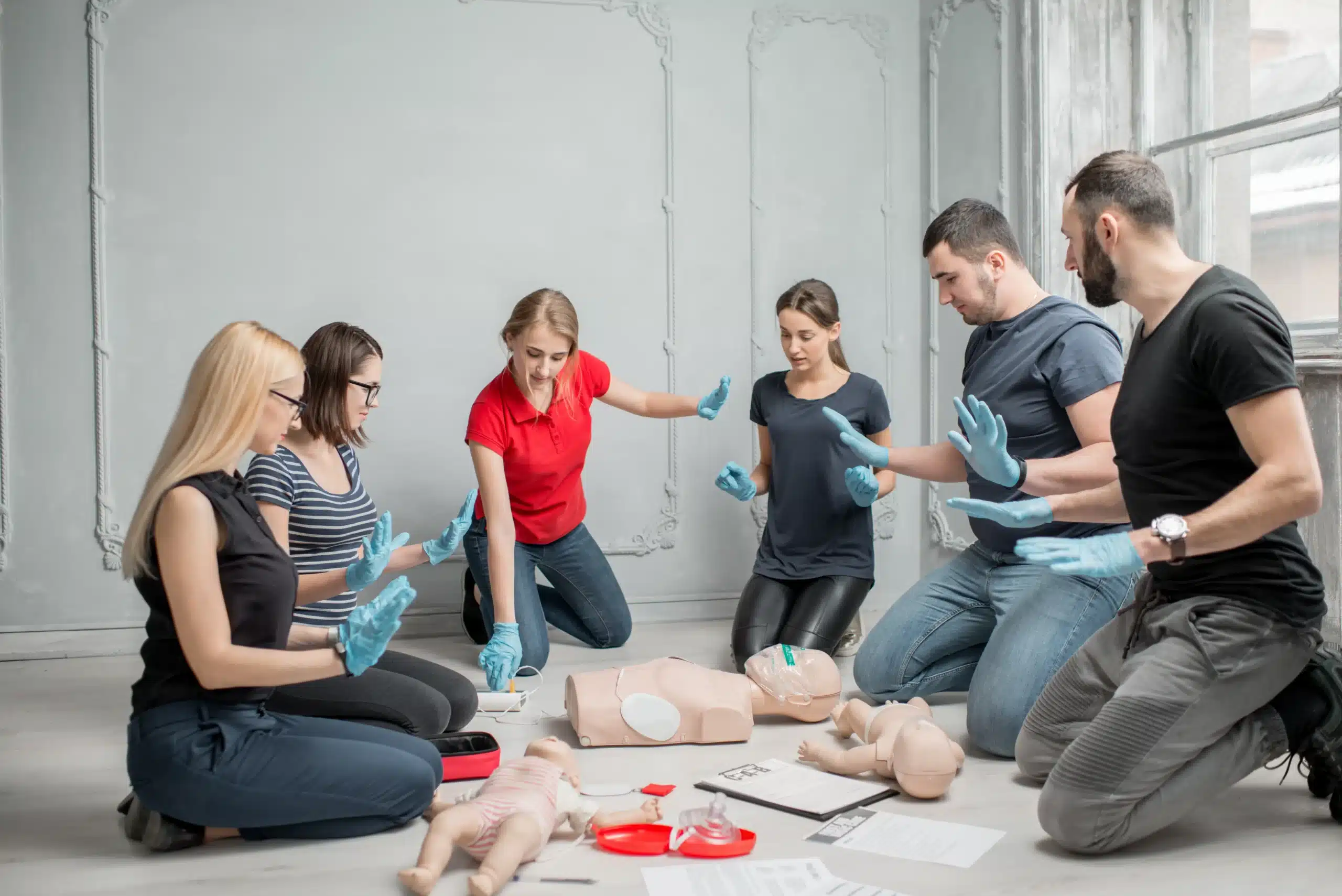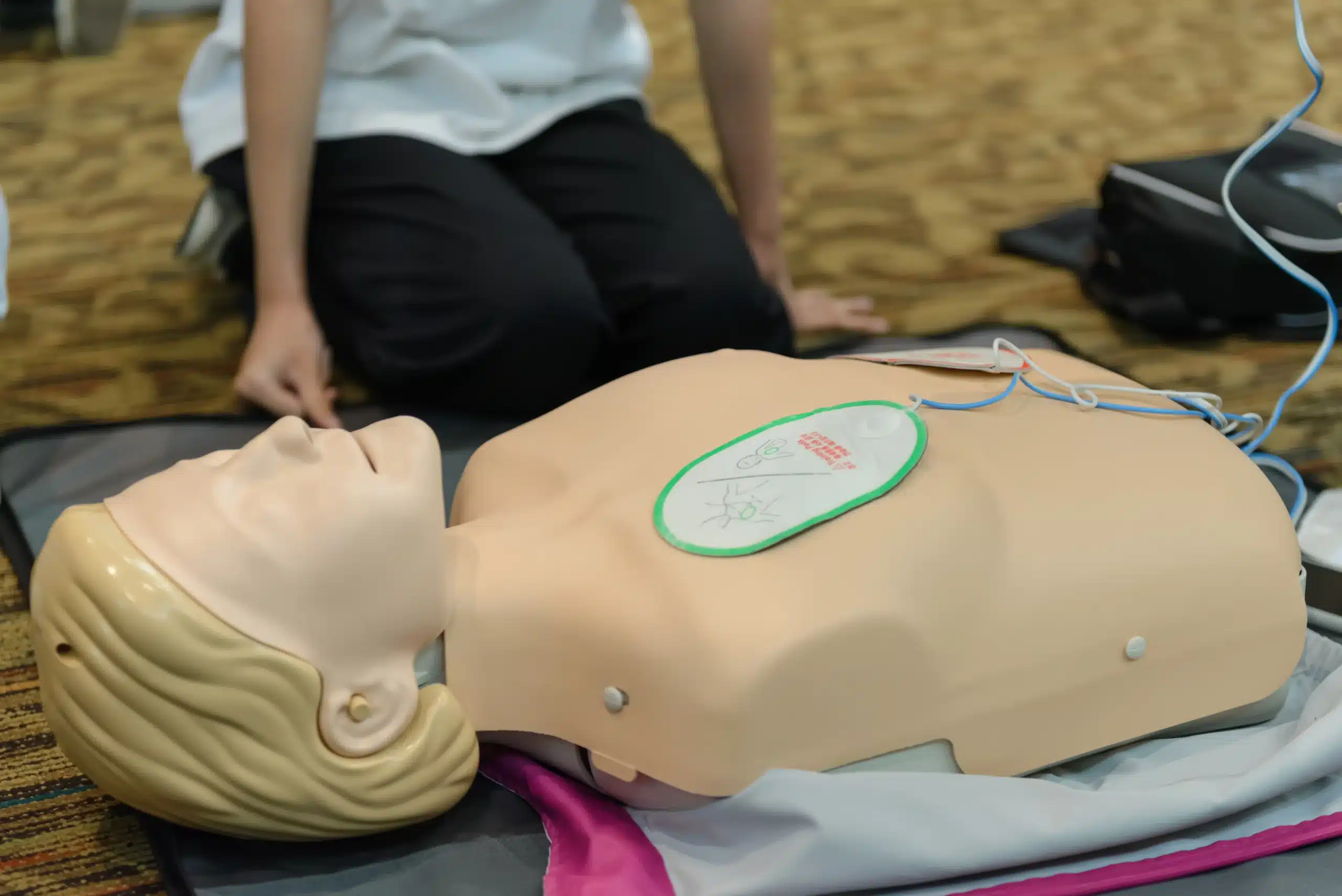Emergencies can happen anytime, anywhere. Would you know what to do if someone near you experienced a sudden cardiac arrest? Learning basic life support in Berkeley empowers you to confidently respond to such critical situations. This article explores the importance of BLS training, the various courses available in Berkeley, and how these skills can make a real difference in your community. We’ll cover everything from CPR techniques and AED use to finding the right course for your needs and maintaining your certification. Get ready to become a vital link in the chain of survival.
Key Takeaways
- BLS skills empower anyone to save a life: From healthcare providers to everyday citizens, BLS training equips you to handle emergencies like cardiac arrest, choking, and respiratory distress. Find a course format—in-person, online, or blended—that suits your lifestyle.
- Affordable, quality training is accessible: Seek out reputable providers like Safety Training Seminars, an American Heart Association Training Center, offering a low price guarantee and convenient scheduling options. Consider factors like location and included materials.
- Maintain your skills for long-term preparedness: Regularly refresh your knowledge and practice your techniques. Recertify every two years to stay current with the latest guidelines and ensure you’re always ready to respond confidently.
What is Basic Life Support (BLS)?
Basic Life Support (BLS) is a crucial set of lifesaving skills for responding to medical emergencies like cardiac arrest, breathing problems, and choking. BLS training covers core techniques such as CPR (cardiopulmonary resuscitation), using an AED (automated external defibrillator), and opening a blocked airway. These skills are essential for healthcare providers and anyone who wants to be prepared for an emergency. BLS certification equips you to provide immediate care, potentially increasing the chances of survival until professional help arrives. It emphasizes early recognition and intervention—two factors that significantly impact outcomes. Learning BLS means you can confidently step in during those critical first few minutes of an emergency. For a comprehensive list of CPR resources in Northern California, check out our directory. We believe everyone should have access to affordable, high-quality training, which is why we offer a low price guarantee. We also offer the innovative RQI program from the American Heart Association for a fast and efficient certification process. Contact us to learn more about our courses.
Find BLS Training in Berkeley
Finding the right BLS training program in Berkeley depends on your individual needs. Here are a few reputable options:
Safety Training Seminars
Safety Training Seminars offers various lifesaving courses, including BLS, CPR, and First Aid. As an American Heart Association (AHA) Training Center, their training follows the latest AHA guidelines and equips participants with essential skills for medical emergencies. Check out their convenient RQI classes for a fast and efficient certification process. They also offer a low price guarantee.
American Red Cross
The American Red Cross provides comprehensive CPR/AED and BLS classes in Berkeley, catering to both healthcare professionals and the general public. Their courses focus on essential lifesaving techniques.
UC Berkeley University Health Services
UC Berkeley University Health Services offers BLS training specifically designed for students and staff, preparing them for campus emergencies. These courses cover the necessary knowledge and skills for effective BLS performance.
Berkeley Fire Department
The Berkeley Fire Department shows its commitment to community safety by offering BLS training within its public safety initiatives. These programs empower residents to handle emergencies, creating a safer community.
American Heart Association Training Centers
American Heart Association Training Centers provide BLS certification courses essential for healthcare providers and others seeking high-quality instruction in lifesaving techniques. Their training is nationally recognized.
Choose Your BLS Course
Finding the right BLS course depends on your learning style and schedule. Let’s break down the main options: in-person, online, and blended learning. Each format has its own advantages, so consider what works best for you.
In-Person Training
In-person BLS training offers a hands-on learning experience perfect for those who thrive in a traditional classroom setting. You’ll work directly with instructors, practice skills on manikins, and ask questions in real-time. Safety Training Seminars offers in-person BLS courses throughout Northern California, providing a structured environment for mastering essential lifesaving techniques. This format allows for immediate feedback and personalized guidance from certified instructors. For those in Berkeley, the Red Cross also offers in-person training leading to a two-year certification that meets OSHA standards.
Online Courses
If your schedule is packed or you prefer learning at your own pace, an online BLS course might be a good fit. Online courses offer flexibility, allowing you to study anytime, anywhere. You’ll typically find interactive modules, videos, and quizzes to guide you through the material. While online courses offer convenience, it’s important to remember that they may not include the hands-on skills assessment required for some certifications. The Red Cross notes that while their online courses are convenient, they don’t provide OSHA certification. Check with your certifying body or employer to ensure an online-only course meets their requirements.
Blended Learning
Blended learning combines the convenience of online learning with the benefits of in-person instruction. You’ll complete the coursework online, then attend an in-person session to practice skills and complete a certification exam. This format offers a balance of flexibility and hands-on experience. Providers like Bay Area CPR offer blended learning programs, often using technology like voice-assisted manikins to enhance the practical training portion. This approach can be particularly helpful for those who want a more comprehensive learning experience but can’t commit to a fully in-person course.
BLS Class Cost & Value in Berkeley
Finding the right BLS class often involves balancing quality with cost. Let’s break down the typical expenses and how to find the best value for your training in Berkeley.
Average Price Range
BLS class prices in Berkeley vary depending on the provider, the course format (online, in-person, or blended), and included materials. You’ll find a range of options, so compare a few before committing. Many providers, like Safety Training Seminars, prioritize affordability and offer competitive rates for their CPR, BLS, ACLS, PALS, and First Aid courses. Research will help you find a course that fits your budget.
Discounts and Promotions
Keep an eye out for discounts and promotions. Organizations like the Red Cross often have special offers on their CPR classes and certifications in Berkeley. These deals can include percentage discounts or free training materials, so checking their website or contacting them is worthwhile.
Low Price Guarantee
Some training centers ensure you’re getting a good deal. Safety Training Seminars offers a low price guarantee for their courses in Alameda County, giving you confidence that you’re receiving high-quality training at a competitive price. Ask potential providers about any price guarantees.
BLS Certification: Details & Recognition
Getting your BLS certification is a rewarding achievement. Here’s what you need to know about accreditation, timelines, and how same-day certification works.
Validity Period
Your BLS CPR/AED certification is valid for two years. Mark your calendar so you remember to recertify before it expires. Staying current with your training ensures you’re always prepared to provide effective assistance.
Accreditation and Industry Recognition
Safety Training Seminars is an American Heart Association (AHA) Training Center, offering CPR, BLS, ACLS, PALS, and First Aid classes in Berkeley, CA. This accreditation is widely recognized and respected. BLS certification goes beyond standard CPR training. It equips healthcare professionals and first responders with advanced techniques for managing cardiac arrest, respiratory distress, and airway obstructions. It’s a comprehensive approach to life-saving care.
Same-Day Certification
At Safety Training Seminars, students receive their official American Heart Association certification cards the same day they complete their training. Our streamlined process, including the efficient RQI program, makes getting certified fast and convenient. This program combines online coursework with a hands-on skills test, allowing you to earn your certification quickly.
What Happens in a BLS Course?
BLS certification equips you with the skills to respond to life-threatening emergencies, focusing on high-quality CPR and emphasizing early intervention. You’ll learn to recognize when someone needs CPR, provide effective chest compressions and rescue breaths, and work as a team during a cardiac or respiratory arrest. The course also covers AED use and choking relief. Let’s break down the key components:
CPR Techniques for Adults, Children, and Infants
BLS courses teach CPR techniques tailored to different age groups. You’ll learn the correct hand placements and compression depths for adults, children, and infants, ensuring you can provide effective assistance regardless of the victim’s age. This includes understanding the physiological differences between these groups and how to modify your approach. For example, infant CPR requires a gentler touch and a different compression technique than adult CPR. These nuances are crucial for providing safe and effective care. BLS training covers these essential skills, giving you the confidence to respond in various emergencies.
AED Use and Care
Automated External Defibrillators (AEDs) are life-saving devices used to treat sudden cardiac arrest. A BLS course will guide you through the safe and effective use of an AED, including assessing the situation, applying the pads, and following the device’s prompts. You’ll also learn about AED maintenance and precautions. Understanding how to quickly and correctly use an AED can significantly increase the chances of survival for someone experiencing cardiac arrest.
Choking Relief
Choking is a common emergency that can quickly become life-threatening. BLS training covers various techniques for relieving choking in both conscious and unconscious individuals. You’ll learn how to perform the Heimlich maneuver and back blows and recognize the signs of choking. These skills are invaluable for assisting anyone experiencing a choking emergency. Learn more about choking relief techniques and how they fit into BLS training.
Scenario-Based Training and Practice
BLS courses go beyond lectures and demonstrations by incorporating scenario-based training. This hands-on experience allows you to apply your knowledge in realistic emergency situations, build confidence, and improve your response time under pressure. Working through simulated scenarios helps solidify your understanding of BLS and prepares you to react calmly and efficiently in a real emergency. Real-life examples and scenario-based training are key components of a comprehensive BLS course.
Prepare for Your BLS Class
Getting ready for your BLS class doesn’t have to be stressful. A little preparation goes a long way in making sure you get the most out of your training. Here’s what you should know:
Recommended Pre-Course Materials
Reviewing pre-course materials can significantly improve your learning. Think of it as a warm-up for your brain. Studies show that pre-evaluation can make a difference in how well you absorb and retain information. Many courses, including those offered by Safety Training Seminars, offer resources like study guides and videos. Take advantage of these—they can give you a real edge. Learning about effective training techniques can also improve your overall experience.
What to Bring
Come prepared with a positive attitude and a willingness to learn. Your BLS provider will tell you about any required materials, but a notebook and pen for taking notes are always a good idea. Comfortable clothing is also recommended, since you’ll be practicing hands-on skills. Check with Safety Training Seminars about anything specific you might need for your BLS class. Being mentally prepared and having the right materials will help you succeed, as shown in these real-world stories.
Common BLS Training Misconceptions
One common misconception is that BLS training is only for healthcare professionals. This isn’t the case. BLS certification is valuable for anyone who wants to be ready to help in a medical emergency. From teachers and coaches to parents and grandparents, the skills you learn can be helpful in all kinds of situations. Another myth is that getting certified takes a lot of time. Many courses, like our RQI program, are designed to be quick and efficient, fitting into even the busiest schedules. BLS training is for everyone, including people outside of healthcare, so don’t let these myths stop you.
Select the Right BLS Course
Choosing the right BLS course depends on your background and what you want to achieve. Whether you’re a healthcare professional or just want to learn life-saving skills, there’s a BLS course out there for you. Let’s explore the different options.
Healthcare Provider Courses
BLS certification is crucial for healthcare providers like paramedics, EMTs, nurses, and doctors. These courses cover patient care in greater depth and build on the fundamental skills needed to respond effectively in medical emergencies. They often include advanced airway management, pharmacology related to resuscitation, and team dynamics training. If you work in healthcare, a healthcare provider BLS course is likely the best choice. Our American Heart Association BLS course is designed specifically for healthcare professionals.
General Public Courses
BLS training is incredibly valuable for everyone, even if you’re not in the medical field. These courses teach you how to handle emergencies like choking, cardiac arrest, and respiratory distress. You’ll learn CPR, how to use an AED, and how to provide basic first aid. This knowledge can empower you to save a life, whether at home or out in your community. Contact us to learn more about our general public courses.
Specialized Training
Specialized training can further enhance your skills beyond the core BLS techniques. For example, teachers, coaches, and childcare providers might benefit from courses focusing on pediatric CPR and choking rescue. Other specialized training could include wilderness first aid or advanced cardiac life support (ACLS). Think about your specific environment and potential emergency scenarios when exploring specialized training. Our Northern California CPR directory can help you find additional resources and specialized courses.
Maintain Your BLS Certification
Keeping your BLS skills sharp is crucial for providing effective care in emergencies. This section covers how to stay current with your certification and continuing education.
Renew Your Certification
BLS certifications typically expire after two years. It’s essential to renew your certification before it lapses to ensure you’re always prepared to respond. Some providers allow a grace period, sometimes up to 30 days after expiration. Check with your certifying organization, such as the American Heart Association or the Red Cross, for specific renewal policies. Don’t let your skills and credentials become outdated. Plan and schedule your renewal course in advance.
Continuing Education
Even if your certification isn’t due for renewal, continuing education can significantly enhance your skills. Consider refresher courses or explore advanced training to deepen your understanding of life-saving techniques. Organizations like American Health Training offer affordable and flexible options. Staying informed about the latest guidelines and best practices ensures you’re providing the highest quality care.
Update Your Skills Regularly
The medical field is constantly evolving, and BLS techniques are no exception. Regularly reviewing and practicing your skills is essential for maintaining proficiency. Consider practicing with friends, family, or colleagues, or take advantage of online resources and simulations. Resources like Smart Sim Registration offer insights into staying current with BLS for healthcare providers. By actively engaging with the material and refreshing your knowledge, you’ll be better equipped to handle real-life emergencies with confidence.
BLS Training’s Impact on Berkeley
BLS training is more than just a certification; it’s an investment in Berkeley’s safety and well-being. It empowers individuals to respond effectively during emergencies, creating a ripple effect that strengthens the entire community.
Real-Life BLS Applications
Basic Life Support (BLS) techniques are crucial in those first few critical minutes of a medical emergency. Knowing how to perform chest compressions correctly can dramatically increase someone’s chances of survival during cardiac arrest. Confidence in your BLS skills allows you to act quickly and decisively, potentially saving a life. Effective BLS training builds the muscle memory and critical thinking needed to make a real difference. Think of it as equipping yourself with the tools to be a vital link in the chain of survival.
Community Preparedness and Resilience
When more people in Berkeley are trained in BLS, it creates a network of potential first responders. This community-wide preparedness fosters a sense of resilience and shared responsibility for one another’s safety. Learning about real-life scenarios and understanding the potential impact of BLS can be incredibly motivating, as shown in recent studies. It’s about empowering individuals to step up and make a difference, knowing they have the skills to potentially save a life. This collective preparedness strengthens the fabric of the Berkeley community, making it a safer and more resilient place for everyone.
Related Articles
- BLS Classes in Sacramento: Your Complete Guide – San Francisco Bay Area CPR Classes
- BLS Classes in Oakland: The Complete Guide – San Francisco Bay Area CPR Classes
- CPR Certification in San Jose: Your Complete Guide – San Francisco Bay Area CPR Classes
- BLS CPR Classes in Bay Area, CA – San Francisco Bay Area CPR Classes
- CPR Training in Sacramento: Your Ultimate Guide – San Francisco Bay Area CPR Classes
Frequently Asked Questions
Is BLS certification right for me, even if I’m not a healthcare professional? Absolutely! While essential for healthcare providers, BLS skills are valuable for anyone who wants to be prepared for an emergency. Knowing how to respond to situations like choking, cardiac arrest, or breathing difficulties can make a real difference, whether at home, work, or out in the community.
What’s the difference between online, in-person, and blended BLS courses? In-person classes offer hands-on learning with direct instructor feedback. Online courses provide flexibility for those with busy schedules, allowing you to learn at your own pace. Blended learning combines online coursework with in-person skills sessions, offering a balance of convenience and practical experience. The best choice depends on your learning style and schedule.
How much does a BLS class typically cost in Berkeley? Prices vary based on the training provider, course format, and included materials. It’s always a good idea to compare options and look for potential discounts or promotions. Some providers, like Safety Training Seminars, offer a low-price guarantee, ensuring you receive quality training at a competitive rate.
How long is BLS certification valid, and how do I renew it? BLS certification is typically valid for two years. You’ll need to take a recertification course before it expires to maintain your credentials. Check with your certifying organization for specific renewal requirements and look for refresher courses to keep your skills sharp.
What will I learn in a BLS course? You’ll learn essential lifesaving techniques, including CPR for adults, children, and infants, how to use an AED, and how to relieve choking. BLS courses also cover recognizing the signs of a medical emergency and how to respond quickly and effectively. Many courses incorporate scenario-based training to help you apply your knowledge in realistic situations.


